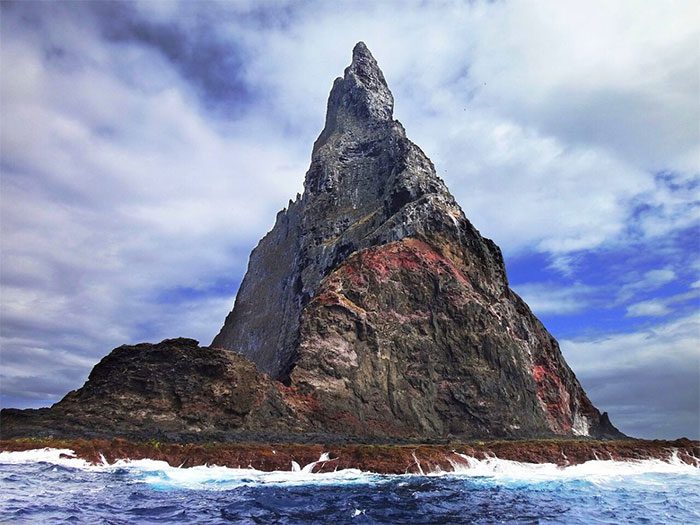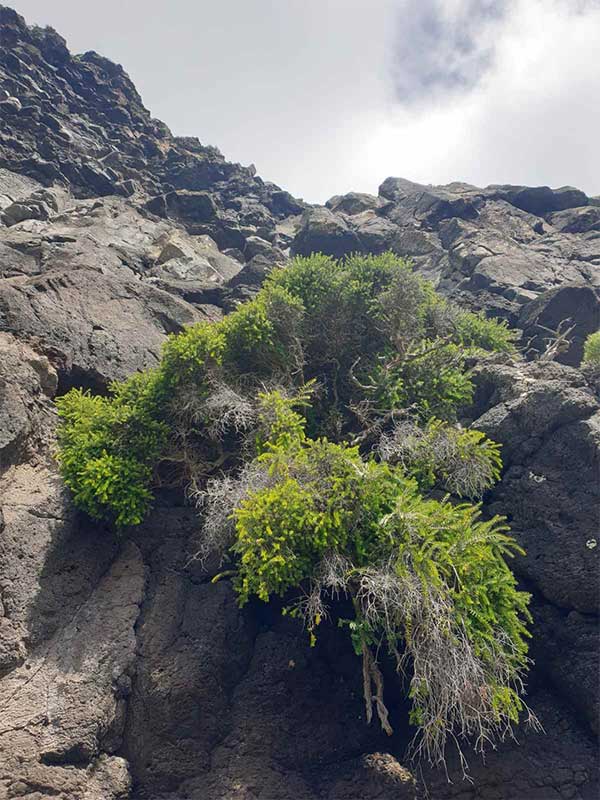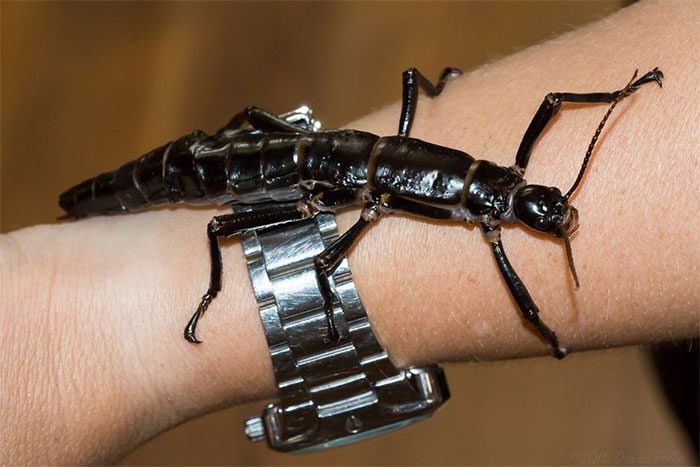Dryococelus australis, known as the Lord Howe Island stick insect, is a species of stick insect native to the Lord Howe Island group. It was once considered extinct in 1920 and was rediscovered in 2001.

Ball’s Pyramid, the highest sea stack in the world, is home to Dryococelus australis, the rarest insect in the world.
Soaring like a volcanic spear from the Tasman Sea, Ball’s Pyramid is the highest sea stack in the world – an impressive peak formed through the erosion of an ancient shield volcano approximately 6.4 million years ago. At an astonishing height of 562 meters (1,844 feet), this uninhabited islet possesses a unique ecosystem with many seabird species, insects, and some endemic plants clinging to its rugged slopes.
Located about 600 km (373 miles) east of mainland Australia in the Tasman Sea, Ball’s Pyramid is the isolated volcanic remnant of a submerged continent known as Zealandia – as well as the much larger Lord Howe Island nearby. Ball’s Pyramid is considered a beacon of biodiversity and geological wonder, attracting daring climbers and scientists eager to uncover its secrets.

Ball’s Pyramid has a unique ecosystem with many seabird species, insects, and some endemic plants clinging to its rugged slopes.
However, this isolation also harbors vulnerability, evidenced by the tragic extinction of the Lord Howe Island stick insect (Dryococelus australis) – also known as the tree lobster – just over 50 years ago. Once thriving on Lord Howe Island, the stick insect disappeared in the early 20th century, likely a victim of invasive black rats that arrived on the island on a shipwreck in 1918.
Yet, in 2001, amidst the seemingly barren rock surface of Ball’s Pyramid, scientists discovered a small population struggling to survive and save the species from the brink of extinction. The tree lobsters had settled on a single bush of Howeana tea tree, the only plant species on Ball’s Pyramid, which turned out to sustain the entire remaining population of this species – a solitary bush on the entire island!

Howeana tea bush. This is the amount of vegetation that tree lobsters need to survive.
The Howeana tea bush thrives in a crevice where water seeps through cracks in the rock. At night, the insects settle near the roots of the plant or nearby crevices. During the day, the bush is the only food source for the insects on this island. How the tree lobsters managed to move from Lord Howe Island to Ball’s Pyramid remains a mystery, but it is speculated that common birds may have inadvertently transported them as nesting material.
Since the rediscovered population consists of only 24 individuals, the tree lobster has earned the title of “the rarest insect in the world.”

Dryococelus australis (Lord Howe Island stick insect, tree lobster), is a species of stick insect native to the Lord Howe Island group. It was once considered extinct in 1920 and was rediscovered in 2001 (this phenomenon is called the Lazarus effect). It had gone extinct in its largest habitat, Lord Howe Island, and is referred to as the “rarest insect in the world”, with the rediscovered population consisting of only 24 individuals living on Ball’s Pyramid.
Adult Lord Howe Island stick insects can grow up to 20 cm long and weigh 25 grams, but what truly sets them apart is their social life. Unlike most insect species, where males and females meet briefly for mating, these creatures form long-lasting bonds.
Males and females pair up, share food, groom each other, and even cuddle up at night – a rarity in the insect world. This unique behavior, observed by entomologists studying the rediscovered population, adds another layer of intrigue to this already extraordinary story.

Females lay eggs while hanging on a branch. The eggs hatch 9 months later. The nymphs after hatching are green and active during the day, but as they mature, they turn black and become nocturnal.
Despite conservation efforts, the future of these remarkable creatures remains precarious, as the isolation and limited resources of Ball’s Pyramid make them vulnerable to climate change and other disturbances.
Visiting Ball’s Pyramid requires special permits and presents significant physical challenges, making it accessible only to dedicated researchers and explorers – surely good news for the tree lobsters residing there.

Ball’s Pyramid is off-limits to tourists. Lord Howe Island in the background has a population of 382, and the number of tourists is not to exceed 400.
Even when viewed from afar, the story of Ball’s Pyramid, the Lord Howe Island stick insect, and the tea tree on Lord Howe Island serves as a powerful reminder of the hidden wonders that exist even in the most remote corners of our planet and the importance of our role in their decline and conservation.


















































